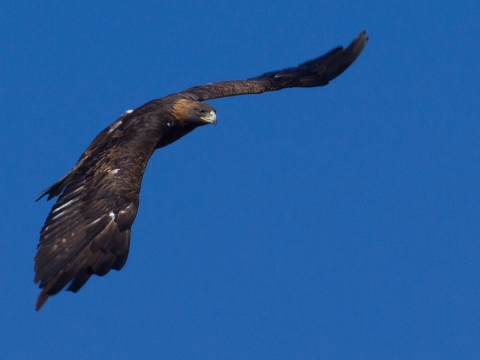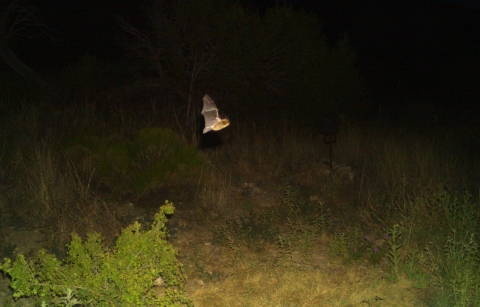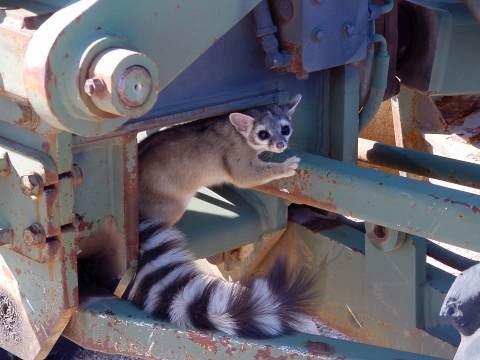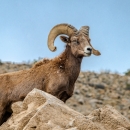Seasons of Wildlife
Here are some of the rhythms of the San Andres National Wildlife Refuge.
Spring
Warmer temperatures stimulate activity. Golden eagles return to their nesting sites. Migrating warblers, orioles, and tanagers stopover at the refuge’s spring-fed riparian riparian
Definition of riparian habitat or riparian areas.
Learn more about riparian sites. Rock wrens, Scott’s orioles, northern mockingbirds, and western kingbirds build nests. Desert bighorn have their lambs. Collared lizards, horned lizards, western diamondback rattlesnakes, and box turtles emerge. Swainson’s hawks reappear. Painted lady and swallowtail butterflies feast on nectar from fresh blooms.
Summer
The monsoon rains arrive around July 4th, and many species time their reproduction to produce young when conditions are good. Mule deer have their fawns. Gambel’s quail produce broods, and greater roadrunners plunder nests to feed their young.
Black bears cool off in refuge springs and guzzlers. Raptors, bats and breeding songbirds raise their young. Broad-tailed, black-chinned, Costa’s, and rufous hummingbirds squabble over summer flowers.
Fall
Tarantulas migrate in search of mates. Migratory birds stop over on their way south for the winter. Skunks, ringtails, ground squirrels, badgers, and porcupines fatten up to prepare for winter. Mule deer and desert bighorn mate.
Winter
Black bears and reptiles hibernate. Desert bighorn ewes are pregnant.
Grassland birds such as black-throated sparrow, dark-eyed juncos, chestnut-collared longspurs, white-crowned sparrows and red-tailed hawks overwinter on the refuge.
Featured Species
San Andres National Wildlife Refuge was established for the protection of a remnant herd of native desert bighorn sheep (Ovis canadensis mexicana). The area of the refuge and the San Andres Mountains provide the largest protected piece of land capable of supporting desert bighorn in New Mexico. Desert bighorn require large areas of steep, rugged mountainous terrain away from human disturbance and the refuge provides this ideal habitat. Currently, about 200 desert bighorn inhabit the San Andres Mountains.
Black bears, mule deer, mountain lions, bobcats, and gray fox all roam the refuge. Although present historically, no black bears had been seen on the refuge since its establishment until one was photographed by the refuge biologist in 2010. Javelina, also present historically, were documented in the early 2000s after many years with no sightings. They are prevalent throughout the refuge today.
The refuge also supports a number of raptors and other migratory birds, including breeding pairs of golden eagles. The refuge’s isolated spring-fed riparian riparian
Definition of riparian habitat or riparian areas.
Learn more about riparian systems function as migratory bird stopovers. Rare sightings include painted redstart, winter wren, indigo bunting, painted bunting, varied bunting, and northern parula.
Oryx or gemsbok are a nonnative antelope from Africa that can also be found on the refuge. Oryx were introduced to White Sands Missile Range for hunting in 1969. Oryx have greatly expanded their range in southern New Mexico since then and are regularly spotted on the refuge. The Refuge works with NMDGF and White Sands Missile Range to manage their population on the Refuge as close to zero as possible.






